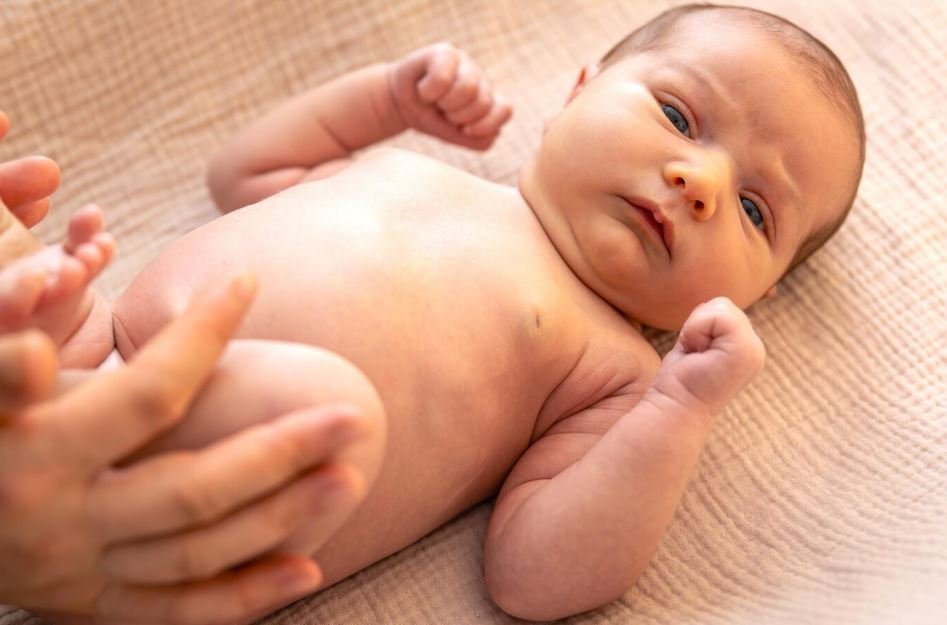
Even the most composed parent can be understandably alarmed by swelling in a baby boy’s private area, but with prompt action and consistent care, the issue usually goes away. Pediatric specialists have recently placed more emphasis on the effectiveness of easy, non-invasive solutions that families can use at home without resorting to needless procedures or panic attacks.
The underlying cause of puffiness or redness around a baby’s genital area is frequently mild and curable. The most common problem is balanitis, which is an inflammation of the glans penis that is typically brought on by unhygienic practices or irritating baby products. Eliminating scented soaps and wipes is the first step towards remarkably effective home management because they can aggravate sensitive skin. A warm, soap-free bath helps to calm the area and lets the skin heal itself.
Baby Boy Private Part Swelling – Causes and Effective Home Remedies
| Symptom/Condition | Likely Cause | Common Age Range | Helpful Home Remedies | Medical Attention Needed If… |
|---|---|---|---|---|
| Redness or puffiness | Balanitis, irritation | 0–3 years | Warm baths, barrier cream, mild soap | Redness spreads, pain persists, discharge appears |
| Puffy scrotum | Hydrocele | Newborns | Monitor, allow time for natural absorption | Lasts beyond 1 year or causes discomfort |
| Groin bulge or firmness | Inguinal hernia | 0–5 years | Reduce friction, avoid pressure | Always – surgical consultation often required |
| Foreskin tightness | Natural or phimosis | Up to adolescence | Don’t retract, rinse with water only | Painful urination or foreskin balloons with pee |
| Skin dryness, rash | Contact dermatitis or nappy rash | Any age | Fragrance-free products, air-dry time, cotton wear | Symptoms worsen or skin cracks |
| Painful urination + swelling | Balanoposthitis or infection | Any age | Soothing baths, keep clean and dry | Any pus, fever, or persistent crying |
In order to prevent further irritation and promote healing, parents can apply a thin layer of a zinc-based barrier cream, similar to those used for diaper rash. Allowing the baby some “nappy-free” time during diaper changes is especially helpful because the fresh air helps dry the area and minimizes fungal buildup. Parents from all walks of life, from pediatricians in Los Angeles to mothers in Chelsea, London, have praised this gentle method as being very effective.
Another common cause of genital swelling, hydrocele, frequently results in a soft, balloon-like puffiness in the scrotum as a result of fluid buildup. Although it may appear concerning, it is typically painless and goes away on its own by the first year. Even though there is no treatment for this condition, it emphasizes the value of patience and observation because rushing to find antibiotics or creams can backfire.
More urgently, an inguinal hernia might be the cause if the swelling manifests as a firm bulge in the groin. Although a professional evaluation is necessary in this situation, even in these situations, the baby can be kept comfortable at home by taking steps like wearing soft clothing and avoiding needless pressure until surgery is recommended.
Notably, attempting to forcefully retract the foreskin while cleaning is the largest error that many parents make. This is strongly discouraged by pediatric specialists. Any attempt to pull back the foreskin can result in inflammation and microtears because full retraction rarely happens before the age of five, and occasionally not until adolescence. As with washing a face or a foot, the penis should be cleaned externally with lukewarm water and then completely dried.
In fact, well-known parents like Kristen Bell and Dax Shepard have publicly discussed the importance of avoiding over-sanitization, using clean water and unscented wipes, and maintaining a minimalist approach to baby care. Their philosophy is in line with a growing trend among parents to value comfort over cosmopolitan cleanliness and to have faith in the body’s natural processes.
It is imperative to seek medical attention when swelling is accompanied by symptoms such as fever, foul-smelling discharge, or excessive fussiness. Antifungal or antibiotic treatments prescribed by a doctor are necessary for conditions such as balanoposthitis, which is characterized by inflammation of the foreskin and glans. For instance, paraphimosis, a condition in which the foreskin becomes lodged behind the glans, is a medical emergency that needs to be treated right away to avoid obstructing blood flow.
But these kinds of crises are uncommon. Contact dermatitis, in which localized reactions are caused by allergens or irritants from diapers, laundry detergent, or synthetic fabrics, is more commonly the cause of genital swelling. Within a day or two, comfort can be significantly increased by switching to cotton clothing, using detergent without fragrance, and thoroughly washing. Diapers that fit snugly but not too tightly help babies who are already crawling or walking by reducing heat buildup and friction.
Prominent organizations like Seattle Children’s and Royal Children’s Hospital share this emphasis on early comfort and prevention. To lessen the chance of flare-ups, their guidelines now emphasize air-drying time, avoiding wipes on irritated skin, and using mild emollients at each diaper change. Adopting these modifications frequently results in a significant decrease in clinic visits for infants experiencing genital discomfort, according to pediatricians.
